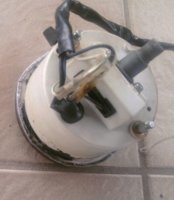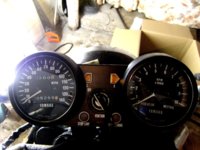I would appreciate suggestions from those who have already actually done this fix.
My tach needle broke in two. Part of it is still attached to the mechanism and still works.
My idea is to take a toothpick, paint it red-orange, and glue it onto the part of the needle that is still working using clear epoxy. Or, maybe I should cut a new needle out of an old credit card instead.
Does anyone have a better solution, or any tips or suggestions? Any better ideas regarding what glue to use?
The real bummer is that I just opened up this same tach about a week ago. The tach came on a new acquisition, and the face and inside glass surface were dirty and fogged, so I went inside and cleaned them up. Now I have to go inside it again.
My tach needle broke in two. Part of it is still attached to the mechanism and still works.
My idea is to take a toothpick, paint it red-orange, and glue it onto the part of the needle that is still working using clear epoxy. Or, maybe I should cut a new needle out of an old credit card instead.
Does anyone have a better solution, or any tips or suggestions? Any better ideas regarding what glue to use?
The real bummer is that I just opened up this same tach about a week ago. The tach came on a new acquisition, and the face and inside glass surface were dirty and fogged, so I went inside and cleaned them up. Now I have to go inside it again.




